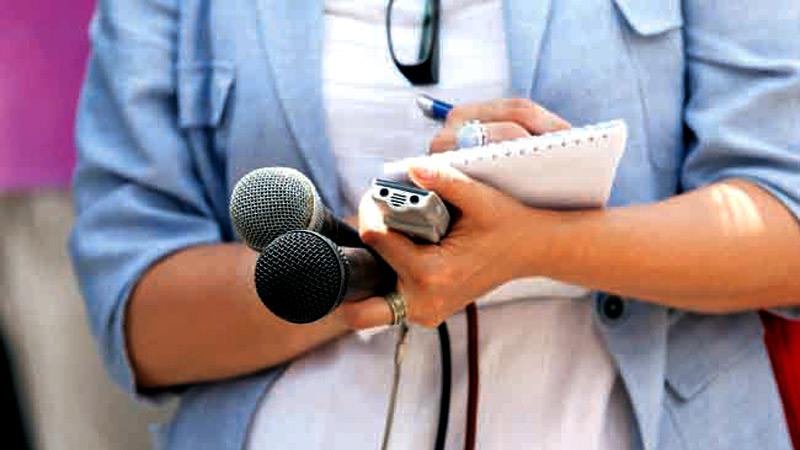
 As human beings, we are naturally curious about the world around us. Even the earliest humans communicated by various means, but three developments made today’s news landscape possible. One was the evolution of language, which enabled easy communications between people. The other was the invention of the written alphabets for most languages (there still are some languages without a written form) and printing. The combination of the last two factors led to an explosion of knowledge that even the common man could access, whereas earlier only a limited number of people were privy to news per se.
As human beings, we are naturally curious about the world around us. Even the earliest humans communicated by various means, but three developments made today’s news landscape possible. One was the evolution of language, which enabled easy communications between people. The other was the invention of the written alphabets for most languages (there still are some languages without a written form) and printing. The combination of the last two factors led to an explosion of knowledge that even the common man could access, whereas earlier only a limited number of people were privy to news per se.
The first to be rolled off the printing presses were books, but very soon the realization dawned that the printed word could be used to disseminate news of what is happening in a given city or country. This is how newspapers were born, more than 400 years ago. Astonishingly, some newspapers that started all those years ago are still being published. Newspapers were also known as journals those days (some newspapers still carry that name) and those who workedfor the newspapers became known as journalists. They also began to be called reporters, for the simple reason that they reported on the day’s events in their locality and elsewhere.
When I was asked to write this piece, I searched on the Internet for a definition of the word journalist and found many. To enlighten readers, I chose this from Wikipedia, which is usually a compendium of articles from everywhere and is generally a good source for definitions of all types.
Definitions
According to these definitions a “journalist is an individual trained to collect/gather information in the formn of text, audio or pictures, processes them to a news-worthy form and disseminates it to the public”. Similarly, and almost interchangeably, a reporter is a type of journalist who researches, writes and reports on information in order to present using sources. This may entail conducting interviews, information-gathering and/or writing articles. Reporters may split their time between working in a newsroom, or from home, and going out to witness events or interviewing people. Reporters may be assigned a specific “beat” (say, health or crime) or an area of coverage such as politics and global affairs. In other words, newspapers, magazines, radio, television and web media cannot exist without journalists who make it all happen. It is their daily inputs that these news outlets depend on to keep their readers and viewers informed, entertained and even enthralled on occasion.
Having got that definition out of the way, the entry of web and social media has muddied the picture somewhat. Now there is a new breed of “citizen journalists” who are armed with smartphone cameras and laptops, who “report” on events as they see fit without any of the general safeguards and practices followed by trained journalists, such as fact checking, giving both (or all) sides of a story, objectivity, proper analysis etc. While even some TV stations and newspapers encourage such citizens to “report”, there could be dangerous consequences stemming from this practice.
Falling for misinformation
 Fortunately, many professional journalists have also taken to social media, with posts containing verified information. But for ordinary users, it is very difficult to choose the wheat from the chaff in the unregulated jungle of social media, so there is a chance that people could fall for misinformation. This is indeed what has happened with regard to vaccination, whereby the myths and misconceptions that abound on social media have swayed many youth away from the booster jab or from vaccines altogether. This is an ideal opportunity for mainstream journalists and media houses to tell the truth with regard to vaccines.
Fortunately, many professional journalists have also taken to social media, with posts containing verified information. But for ordinary users, it is very difficult to choose the wheat from the chaff in the unregulated jungle of social media, so there is a chance that people could fall for misinformation. This is indeed what has happened with regard to vaccination, whereby the myths and misconceptions that abound on social media have swayed many youth away from the booster jab or from vaccines altogether. This is an ideal opportunity for mainstream journalists and media houses to tell the truth with regard to vaccines.
Being a fearless, objective and truthful journalist is by no means an easy task. Journalists are the messengers in society and very often, we see how messengers are targeted, threatened or even killed. Many people in powerful positions despise the truth and target anyone who disseminates the truth. This naturally includes journalists. Attacks on journalists have increased over the years and last year at least 27 journalists and media workers were killed in the line of duty worldwide, with India and Mexico accounting for the highest numbers. Eighteen other journalists have been killed for reasons yet to be established. Nearly 300 reporters from print, electronic and web media were jailed in 2021. The main reason seems to be a growing intolerance of independent reporting. Countless journalists worldwide are harassed in other ways. Here in Sri Lanka, the house of a prominent TV journalist was attacked recently. Worldwide, there is a culture of impunity where the perpetrators of journalists’ killings and attacks go scot-free. It is very rarely that suspects are brought to trial. Reporters work in a dangerous world, especially investigative journalists who probe into corruption and other misdeeds in high places. Yet, journalists working in unison worldwide have been able to expose corruption via such revelations as the Paradise Papers and the recent Credit Suisse leak.
Changes
In the midst of all these, the media landscape too is changing. In mentioned smartphones earlier and indeed, the smartphone has become a major item in the reporter’s arsenal, combining a still camera, video camera, voice recorder, telephone call recorder, notebook, scanner, calendar in addition to the telephone facility itself. And the distinction between print and electronic media journalists is also being blurred, as print media outlets get into multimedia, with full audio, video and graphics in their websites. Thus today’s journalists have to be versatile to straddle both these worlds.
In fact, there is a fear that “print” journalism may disappear in 20 or 30 years, with the advent of a paperless society. Yes, printed newspapers might indeed disappear to be replaced by their digital versions (as some already are), but I am absolutely certain that quality journalism will not. It will survive – in some other form – flexible electronic paper displays, web or even a yet to be invented format. And there will always be a demand for journalists who do not fear to wade into unchartered waters in search of the truth. The truth will always remain the holy grail of good journalism.
